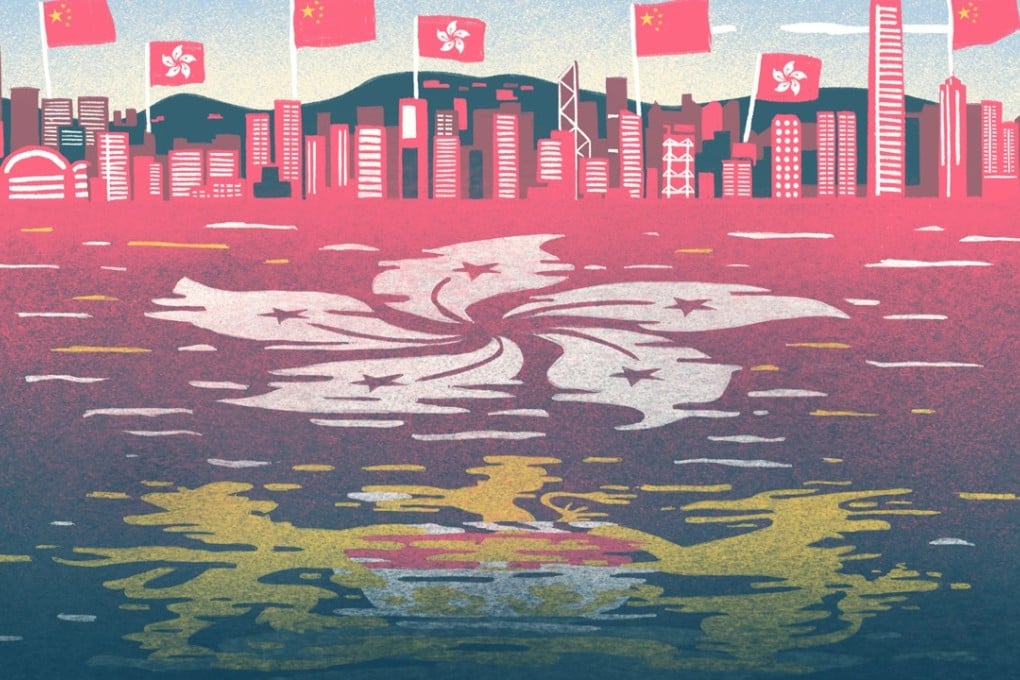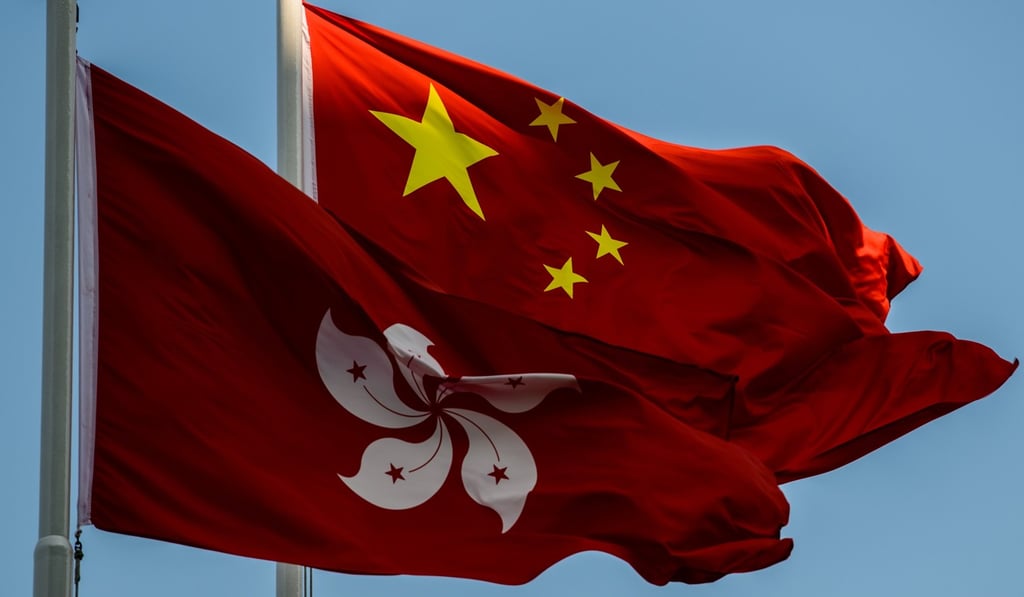The contentious history of Hong Kong’s bauhinia flower flag
- Flags have played an integral part in Hong Kong’s transformation through the decades
- More than 4,000 designs were put forward for city’s post-handover flag design but all were rejected

Every morning, two flags, not one, fly over Hong Kong – China’s five-starred red flag and Hong Kong’s bauhinia flower flag are raised outside government buildings and transport hubs. The national flag flies over that of the city, a symbolic representation of “one country, two systems”, the governing principle under which Beijing allows Hong Kong a high degree of autonomy.
This phenomenon is not unusual for Hong Kong, a region that has never flown an independent flag, but where flags – whether colonial, regional, nautical or as symbols of protest – have played an integral role in politics and history.

Hong Kong’s current flag, a white bauhinia flower against a red backdrop, was first flown at the handover of the city from Britain to China in 1997, when British Hong Kong’s “dragon and lion” flag was lowered and the new bauhinia flag raised beside China’s national flag.
“The flag was a concession to Hong Kong’s autonomy,” said Joseph Bosco, adjunct associate professor of anthropology at the Chinese University of Hong Kong. “China doesn’t have provincial flags; only Hong Kong and Macau are allowed to have their own flags.”
The specially mandated flag is less than 30 years old, but has a contentious history. In recent years, anti-China protesters have marched through the city streets waving the colonial flag, while others transformed the petals on the flag into yellow umbrellas, the symbol of democracy for Hong Kong.